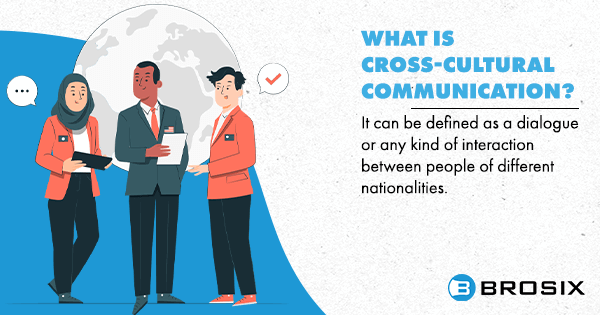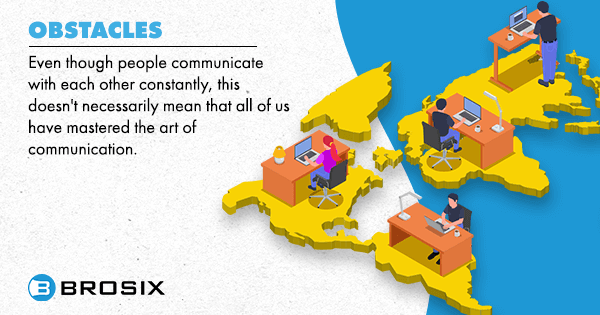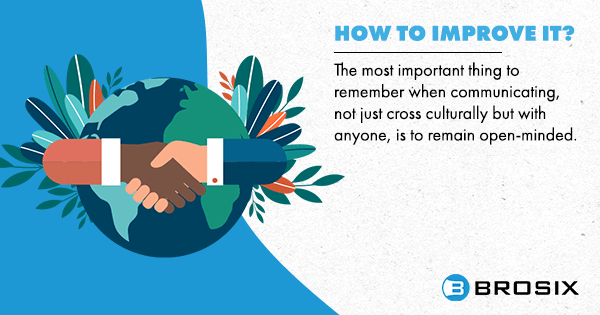The phenomenon of working remotely has led to major changes within organizations across the world. These changes can be seen everywhere; from the way colleagues interact on a daily basis, to the manner in which companies recruit their workforce. The catalyst for this, of course, being the outbreak of COVID-19.
Nowadays’ social context has been the impetus for radical change. It has pushed organizations to be more flexible and open to looking for talent beyond their borders. Most organizations have benefited from this expanded range of employment. Not having employees attached to a designated location and workplace has reduced costs, increased productivity, and strengthened intercultural relationships.
What Is Cross-Cultural Communication?

Cross-cultural communication is the communication between people who have cultural differences due to nationality, age, working style, gender, ethnicity, race, etc. It can be verbal and non-verbal and can include the use of words, gestures, eye contact, or body language when interacting cross-culturally.
Applied to a business-oriented context, cross-cultural communication refers to how well people from different cultures interact in a business environment. And how well they adapt their communication style to their co-worker’s culture.
Why Is Cross-Cultural Communication Important?
Cross-cultural communication is important because it enables you to create a positive work culture by bringing out the best from the cultural backgrounds of all team members. In a multicultural environment, developing solid cross-cultural communication skills is vital.
Diversity is an asset and a core value that all companies should hold. According to data, companies with racially and ethnically diverse leadership and executive teams have a 36% higher likelihood of financially outperforming companies with little or no diversity.
Examining this in greater detail can unearth many opportunities that managers can harness to increase a business’s growth potential.
For example, hiring employees across different age ranges can provide valuable insights into a generation’s habits and consumer preferences. From an organizational point of view, this can be extremely useful when considering the best ways to reach various target groups when conducting marketing initiatives.
The better a company understands its target audience, the greater the success it will have.
This rule applies without exception, regardless of an organization’s activity range or industry. Equally, the example and statement above remain applicable, whether related to age, gender, socio-economic background, etc.
With diversity in the workplace also comes the call to develop better cross-cultural communication skills. For more prosperous personal and business relationships we have to be open and adaptable, nurturing constructive communication with people from all backgrounds.
Examples of Cross-Cultural Communication
Global brands, in particular, having large, worldwide spread offices and employees, face potential miscommunication situations more often in both external and internal communication processes.
A bulletproof multicultural marketing strategy based on proper research will likely skyrocket a brand’s popularity in many markets.
An example of multicultural marketing done right
Apple is a brand that holds a very special place in many consumers’ hearts. While some of its success is due to the flawless quality of the products manufactured, there’s more going on here than meets the eye.
The brand can also attribute its reputation and immense popularity to the way it communicates in its marketing campaigns.
For example, let’s take a peek at one of Apple’s YouTube videos that was part of the Inclusion & Diversity: Open marketing campaign. On YouTube alone, the video received almost two million views. This is an excellent indicator of how well the theme resonates with people, and shows that they want to see more of this kind of initiative.
Even more impressively, Apple has transformed this story into its brand story. In this way, the brand not only promotes inclusion and diversity but also sets an example worth following.
What gives Apple the edge, setting it apart from its competitors and brands from the same industry? Its core values.
The brand resonates with people because they resonate with the values it supports. As stated above, embracing multiculturalism is one of them.
Apple is considered a source of inspiration for many brands aspiring to thrive on the global market. Therefore, adopting and nurturing initiatives promoting diversity and positive cross-cultural communication may be the first step to take your business to the next level.
Examples of cross-cultural communication in the workplace
Now, let’s showcase the importance of cross-cultural communication within internal situations to prevent miscommunication.
Organizations employing a diverse team will clearly have a mixture of people with language differences, which can lead to misunderstandings.
Even if these organizations require a high level of understanding of the chosen working language, there still might be situations that could present challenges for non-native speakers of that language.
Non-native speakers may have a harder time organizing their thoughts in their second language as they might not be so fluent. In these cases, native speakers should show patience and consideration toward their non-native speaking colleagues.
If not, interpersonal relationships and the whole company’s productivity suffers. This is exactly why, to maximize profits, businesses should not neglect the importance of cross-cultural communication in the workplace.
Tips to encourage intercultural communication at work
The management of some large international businesses often has to take work trips to visit offices and colleagues in other countries. On these occasions, colleagues are introduced to different cultural norms and traditions through a special dinner or other activities. These trips provide invaluable opportunities to enrich interpersonal and cross-cultural communication within an organization.
Obstacles to Effective Cross-Cultural Communication
Even though people communicate with each other constantly, this doesn’t necessarily mean that all of us have mastered the art of communication. Especially in situations that involve cross-cultural communication.
If we were to guess, we’d say that the most common obstacle against effective cross-cultural communication is the language barrier. Even now, when technology offers so much help with translation programs and expressive emojis.
Additionally, there are a couple of other factors to keep in mind when communicating.
As established by Laray Barna, a pioneer in the communication theory field, other stumbling blocks in successful cross-cultural communication processes are:
- assumption of similarities
- nonverbal misinterpretations
- preconceptions and stereotypes
- tendency to evaluate
- high anxiety
Depending on the cultures that intersect and each individual’s experience with communicating cross-culturally, some dialogues can be easier or harder to handle. However, where there’s a will, there’s a way. By accepting cultural differences when communicating, it will become easier to create effective interpersonal and business relationships.
How to Improve Cross-Cultural Communication Strategies in the Workplace?
Trips (when possible) are a great way of getting acquainted with different cultures and customs. So, make sure to take mental notes while wandering the streets of a beautiful city or enjoying a fancy cocktail on an exotic beach. Staying curious and open-minded is key.
In the meantime, if you’re eager to improve your cross-cultural communication skills, you can always do a bit of old-fashioned research. Either through Google or books related to cross-cultural communication, whatever works best for you.
The most important thing to remember when communicating, not just with people of different cultures but with anyone, is to remain open-minded. Understanding that not all people have the same customs as you and being sensitive to other traditions and beliefs will serve you well when communicating in any situation.
Some effective general tips to improve cross-cultural communication in the workplace:
- avoid slang
- speak calmly and at an appropriate speed (not too slow and especially not too fast)
- use humor thoughtfully
How Can Brosix Help You Strengthen Your Cross-Cultural Communication Skills?
Cross-cultural communication is a crucial pillar of today’s remote working environment. That’s because employees who feel safe, valued, and welcomed are more likely to contribute wholeheartedly to a company’s growth and productivity.
An easy-to-use instant messaging platform designed with team communication in mind, Brosix helps your organization strengthen your employee’s cross-cultural communication processes. With many communication features available, it is a valuable tool to build a better workplace.
Among a wide array of features that encourage communication and collaboration among employees, you can experiment with voice chat messaging, team chats, its instant video chat feature, and many more.
Finding the right communication tools is an important part of fostering interpersonal and cross-cultural communication in the workplace. However, it also has a more indirect, but equally powerful impact. Positive and productive work relationships matter for a brand’s development on the market.
Book a demo here if you’d like to learn more about how Brosix can align, connect and help your employees collaborate successfully!










